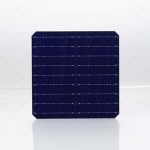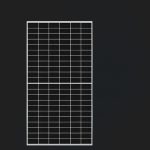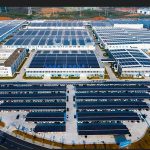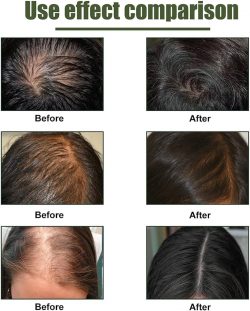HJT Technology
New generation mainstream platform cell tech
Introduction of HJT
Heterojunction technology (HJT) is a N-type bifacial solar cell technology, by leveraging N-type monocrystalline silicon as a substratum and depositing silicon-based thin films with different characteristics and transparent conductive films on the front and rear surfaces respectively.
Combining with the benefits of crystalline silicon and amorphous silicon thin-fim technologies, HJT technology has excellent photoabsorption and passivation effects, as well as outstanding efficiency and performance. HJT panels are one of the technologies to improve the conversion rate and power output to the highest level, also represent the trend of the new generation of solar cell platform technology.
Advantages of HJT
Higher Conversion Efficiency
HJT solar cell uses α-Si thin-film as passivation materials to reduce the loss caused by the migration, which could increase the open circuit voltage to 750mV and guarantee the efficiency up to 24% at beginning.
More Energy Yield
Due to the natural bifacial symmetrical structure, bifaciality of HJT solar module could be up to 97%. And the energy yield gains can reach more than 30% benefiting from the power generation on the back side.
Lower Degradation Rate
HJT solar cells are made of n-type wafer which does not have B-O bond, resulting in no LID. TCO film on HJT solar cell is conductive, so the charge won’t polarize on the surface, which can avoid PID from the structure.
Better Weak Light Performance
The minority carrier lifetime of n-type solar cell is longer, leading a better power generation under weak-light, which is about 0.5%~1% higher than that of bifacial PERC solar cell per watt.
Thinner Wafer Adapted
HJT solar cell can realize 100μm wafer application while ensuring the quality, and can be superimposed with busbar-free and shingle technology to improve the efficiency and save the cost.
Ultra-low Carbon Footprint
By the end of 2023, Huasun will achieve an estimated carbon footprint of HJT solar module manufacturing as low as 397g/W through ongoing technological research and industrialization.
Infinite future of HJT
Huasun will gradually realize the technical iterations of HJT solar cell from 3.0 (double side μc-Si) , 4.0 (double side μc-si with Cu plating) , 5.0 (full back-contact) to heterojunction-perovskite tandem cells, and eventually reach the efficiency of 28% in mass production. The increase in efficiency will further reduce the LCOE. Combining with the continuous decrease in the cost of silicon wafer, metallization, TCO, equipment and production, HJT will truly become the new generation of mainstream solar cell technology.
Huasun is planning to fully apply silver-coated copper paste combined with busbar-free technology in 2023. In 2024, through the application of copper plating technology, the silver consumption per watt will be reduced to 0 mg.
Huasun aims to achieve 800W module power output and 28% cell efficiency by 2025 through the superposition of heterojunction and perovskite.
Roadmap of Huasun
Taking HJT as the core, Huasun keeps enhancing clients’ confidence of solar energy’s future via higher product efficiency, more stable power generation performance, better quality assurance and platform-based technology expansion capabilities.
After more than two years of unremitting efforts, Huasun has not only achieved the leap from HJT 1.0 (double side α-Si) to 2.0 (single side μc-Si) in technical terms, but also transformed the technical results into mass production, and become the world’s largest HJT manufacturer, with the capability of providing high-efficient HJT solar products in a long-term and stable manner to the market which is in high demand.
At present, the highest efficiency of Huasun HJT solar cells in mass production has reached 25.61%, as in the leading position of PV industry. With the premise of ensuring cell efficiency, the company is constantly exploring the methods of cost reduction of HJT solar cells by taking measures of thinning the silicon wafer and introducing silve & copper paste, in order to accelerate the pace of industrialization and marketization of this high-efficient solar cell technology.




























































